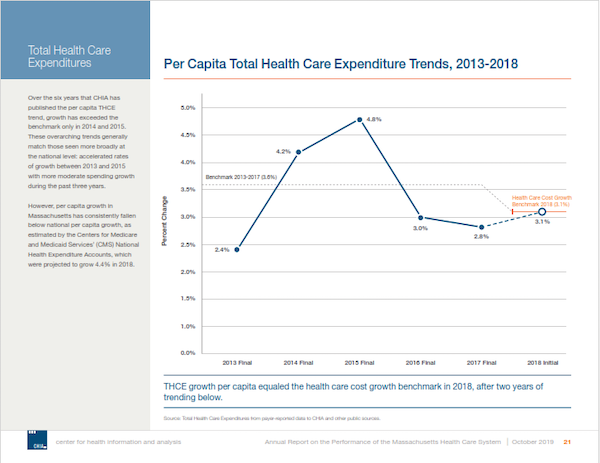One area that saw greater spending growth than the 3.1 percent overall was pharmacy, where spending grew 5.8 percent to $9.9 billion not including rebates, which generally send money back from drug manufacturers to insurers. Including rebates, pharmacy spending grew 3.6 percent to $8.1 billion.
MassBio, the lobbying group representing the state’s pharmaceutical industry, said the growth rate shows a continued slowing of cost growth in that area, and that rebates represented $225.4 million in savings for insurers in 2018 alone.
“Using this measurement of the real costs to the state’s healthcare system, prescription drugs are the third smallest category of healthcare spend and the fourth smallest contributor to the change in total healthcare expenditures,” said Robert Coughlin, president and CEO of MassBio. “As our state’s policymakers consider healthcare reform legislation this session, we urge them to look carefully at the real drivers of healthcare costs in Massachusetts and examine why health insurance out-of-pocket costs and premiums are growing at twice the rate of inflation and substantially faster than the state’s at-benchmark 3.1 percent total healthcare expenditure growth rate.”
Hospital spending also grew faster than the state’s benchmark, with inpatient services up 3.7 percent to $11.7 billion, and outpatient services up 3.8 percent to 11 billion.
Meanwhile, the state made large strides in holding down spending on MassHealth, the state's Medicaid program. The $15.1 billion MassHealth program represents a quarter of all health care spending in the state, and didn’t grow at all from 2017 to 2018.
That fact was largely due to the 2018 launch of the Accountable Care Organization program, which assigns MassHealth patients to a health system to better manage the patient’s care and consequently spending. Spending was also helped by a 4.4 percent decline in membership




